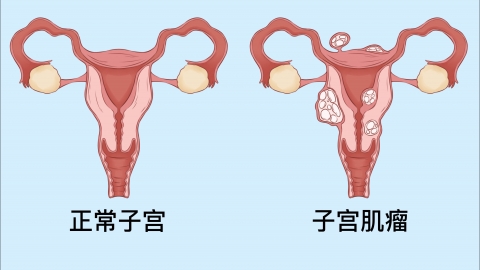How can uterine fibroids be made smaller?
Generally, to reduce the size of uterine fibroids, measures should be taken targeting causes such as hormonal imbalances, poor dietary habits, endocrine disorders, chronic pelvic inflammatory disease, and endometriosis. It is recommended to seek timely medical consultation to identify the specific cause and, under a doctor's guidance, improve the condition through general treatments, medication, and other methods. Detailed explanations are as follows:

1. Hormonal Imbalance: Excessive secretion of estrogen and progesterone can stimulate fibroid growth, commonly seen in women of reproductive age. Adjusting sleep patterns, avoiding late nights, reducing intake of estrogen-containing foods, and consuming more fiber-rich foods like celery and wax gourd can help regulate hormone levels and inhibit fibroid enlargement.
2. Poor Dietary Habits: Long-term high-sugar and high-fat diets leading to obesity can affect hormone metabolism and promote fibroid growth. Controlling dietary calorie intake, reducing consumption of fried foods and sweets, increasing intake of high-quality proteins such as lean meat, fish, and soy products, and engaging in aerobic exercise three times a week for 30 minutes each time can help reduce body weight and assist in shrinking fibroids.
3. Endocrine Disorders: Hormonal imbalances caused by conditions like hypothyroidism and polycystic ovary syndrome (PCOS) can promote fibroid growth, often accompanied by irregular menstruation and fatigue. Patients should follow medical advice to use medications such as levothyroxine sodium tablets, drospirenone and ethinyl estradiol tablets, and spironolactone tablets to regulate the endocrine system and improve the hormonal environment, aiding in reducing fibroid size.
4. Chronic Pelvic Inflammatory Disease: Long-term inflammatory stimulation in the pelvic region may exacerbate fibroid growth, accompanied by symptoms like lower abdominal heaviness and increased vaginal discharge. Patients should follow medical advice to use antibiotics such as cefixime dispersible tablets, azithromycin dispersible tablets, and metronidazole tablets to control inflammation. Once inflammation is alleviated, the stimulation to the fibroids is reduced, assisting in their shrinkage.
5. Endometriosis: Secretions from displaced endometrial tissue can stimulate the uterus, potentially causing fibroid enlargement, accompanied by dysmenorrhea and menstrual irregularities. For mild symptoms, patients can follow medical advice to use medications such as gestrinone capsules, danazol capsules, and naproxen sodium tablets to inhibit the growth of displaced endometrial tissue, indirectly aiding in fibroid reduction.
In daily life, maintaining emotional stability and avoiding prolonged anxiety are important. Regular gynecological ultrasound examinations should be conducted to monitor changes in fibroid size. Menstrual cycle warmth and avoiding strenuous exercise are also advised. Comprehensive lifestyle adjustments can help control fibroid growth and maintain uterine health.




